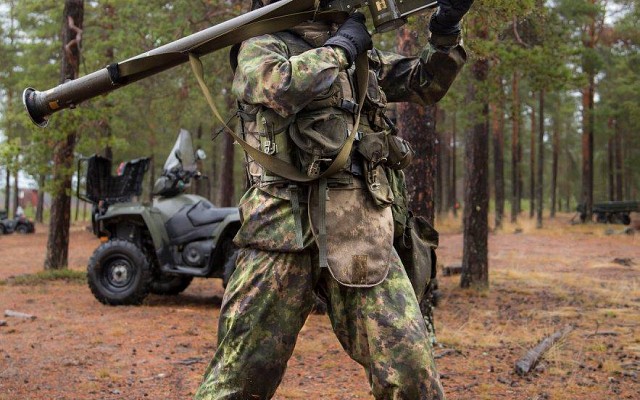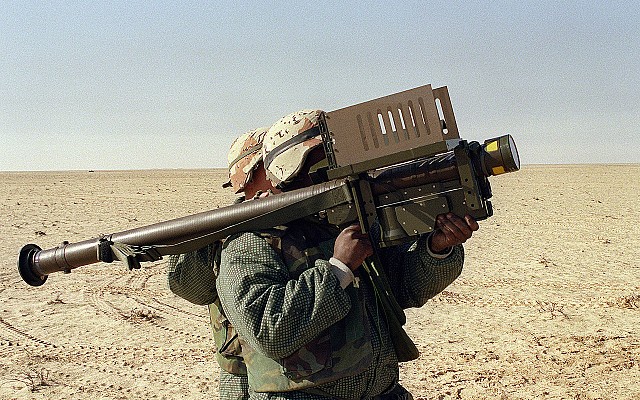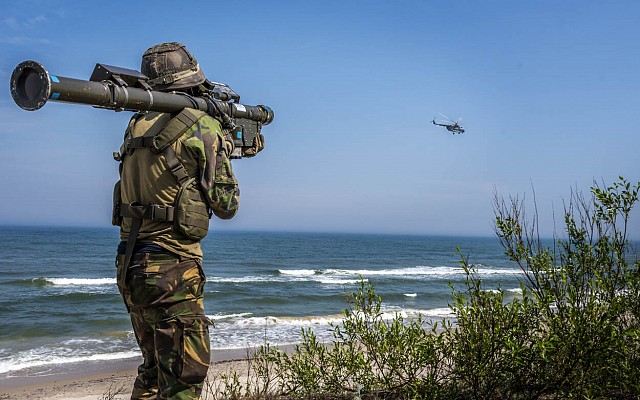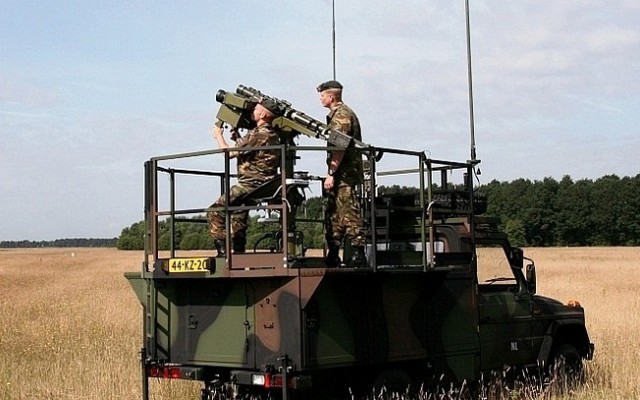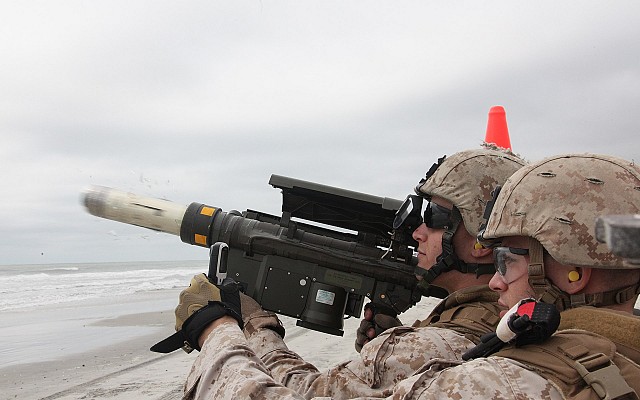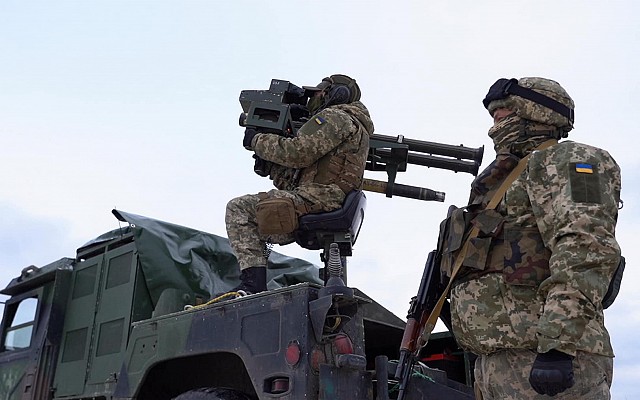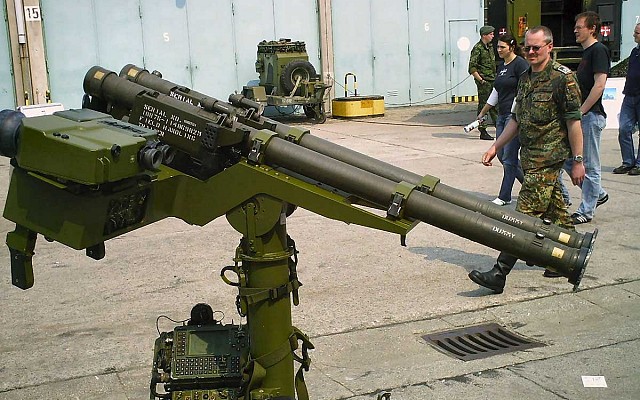FIM-92 Stinger
Overview
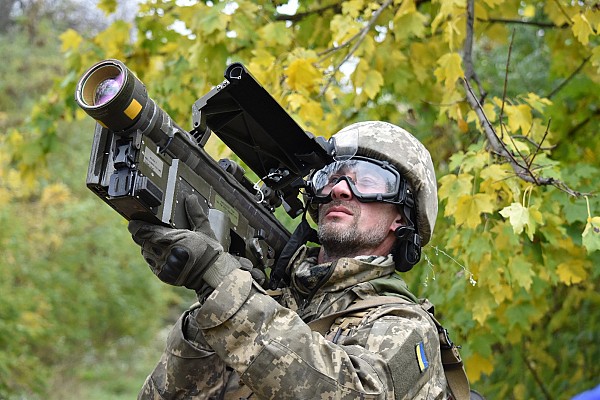
FIM-92 Stinger
Ukrainian soldier ready to launch a FIM-92 Stinger missile in the vicinity of Bakhmut in 2022.
Source: www.mil.gov.ua -
© CC BY 4.0
United States - Raytheon
Germany - EADS
Switzerland - RUAG (3.500 pc.)
Turkey - Roketsan
$ 120.000 in 2020
$ 150.000 in 2022
Over 30.000 FIM-92C
AIM-92 / Air To Air Stinger (ATAS)
Fliegerfaust 2 (German service)
Description
Introduction
The FIM-92 Stinger is a late Cold War era man portable air defense system of US origin. It was developed as a more capable successor to the FIM-43 Redeye. The Stinger is one of the most widely used and best known man portable SAM systems.
Design
The Stinger is a lightweight missile with a solid propellant rocket motor and a booster charge that expels it from the launch tube. An infrared sensor is mounted on the nose and is connected to an onboard computer. Small fins steer the missile towards its target. The high explosive fragmentation warhead has an impact fuse. Modern Stinger variants use a proximity fuse. The reusable launch tube is fitted with an optical sight and IFF antenna. The AN/PAS-18 thermal sight allows for operation at night.
Guidance
Stinger uses passive infrared homing as its guidance. The seeker can lock on to both head on and receding targets. The seeker and computer have been improved over time. From FIM-92B onward a dual spectrum infrared and ultraviolet seeker is used. FIM-92K uses a data link that allows an external sensor to acquire a target beyond the acquisition range of the sensor of the Stinger itself. The missile steers towards the target using the data link and acquires the target mid flight.
Firepower
The Stinger features a seeker that allows for an all aspect engagement of helicopters and aircraft. The missile has a range of 4.8 km and ceiling of 3.8 km. The practical effective range and ceiling depends on the flight parameters of the target. The high explosive fragmentation warhead has proven effective upon impact. For a long time the warhead lacked a proximity fuse, which greatly increases performance against certain types of targets, for instance UAVs.
Mobility
The Stinger is a man portable system that can be operated and shoulder launched by a single operator. Often an assistant gunner helps out with situational awareness, communication and reloading. In addition mounts where the operator is seated are available, such as the Dual Mounted Stinger. The Stinger can also be launched by vehicles, of which the Avenger and Ozelot are well known examples. On helicopters the Stinger can be used in an air-to-air mode against enemy helicopters.
Users
The Stinger was first adopted by the United States and is widely employed as a portable weapon and mounted on vehicles and helicopters. Many NATO members and other nations with good ties to the USA adopted the Stinger, making it one of the most common systems in use.
Variants
The Stinger missile has been updated over time. Current production models are in a different league than the first Stinger model that was introduced.
Most variants of the Stinger missile have been produced both as new missiles and as a rebuilt and life extension program applied to older stocks of missiles.
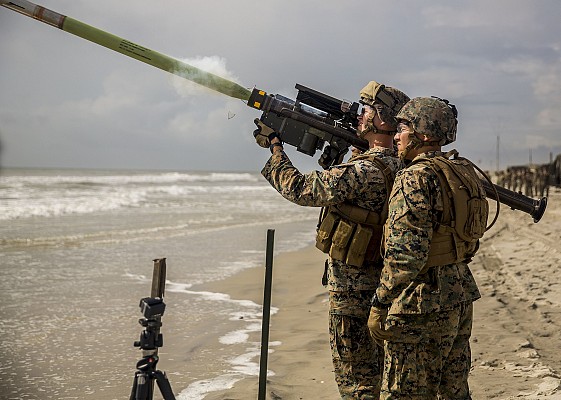
FIM-92 Stinger
US marines launching a FIM-92 Stinger surface to air missile in 2017.
Source: US Marine Corps -
© Public domain
List of Stinger variants
Details
Platforms armed with Stinger
Note: incomplete list

Gripstock launcher
The FIM-92 Stinger was introduced as a man portable system using a reusable gripstock launcher. The gripstock launcher is very portable and allows the operator to step out of cover just before launch.
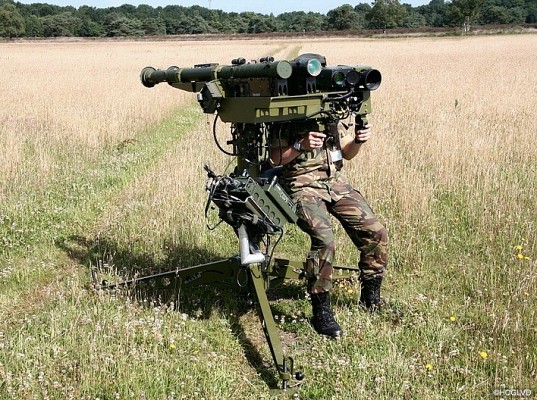
Dual Mounted Stinger
Tripod mounted system with two Stinger missiles ready to fire. The operator is seated, allowing the operator to guard airspace for a longer time than standing with a gripstock launcher.
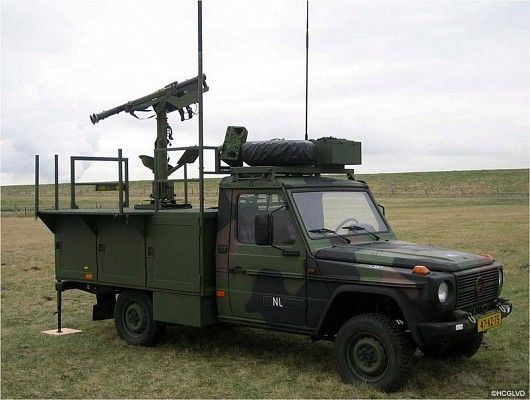
DMS on tactical vehicle
Various nations have fitted the Dual Mounted Stinger system to tactical vehicles for increased mobility. The photo shows as Mercedes Benz 290 GB. Other known platforms include the American HMMWV.
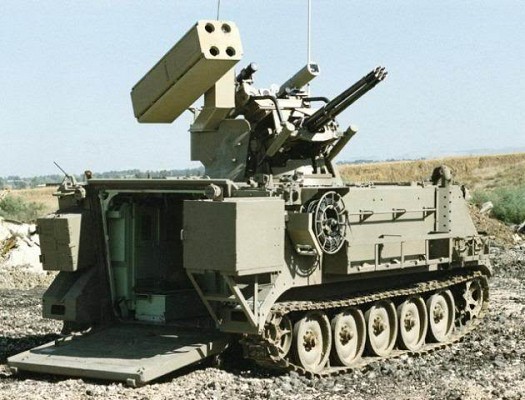
Machbet
Israeli upgrade of the M163 self-propelled anti-aircraft gun with pod with four Stinger missiles in addition to the 20mm M168 gatling gun.
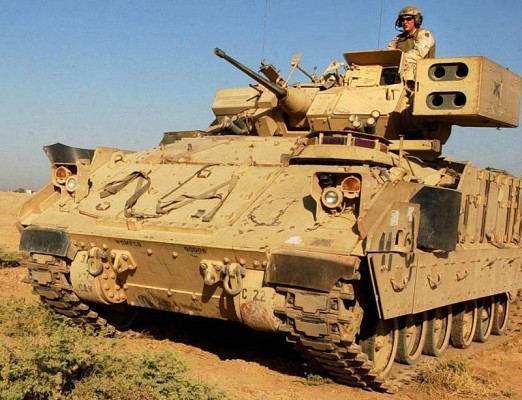
M6 Bradley Linebacker
Variant of the Bradley with pod with four Stinger missiles instead of the TOW anti-tank missiles.
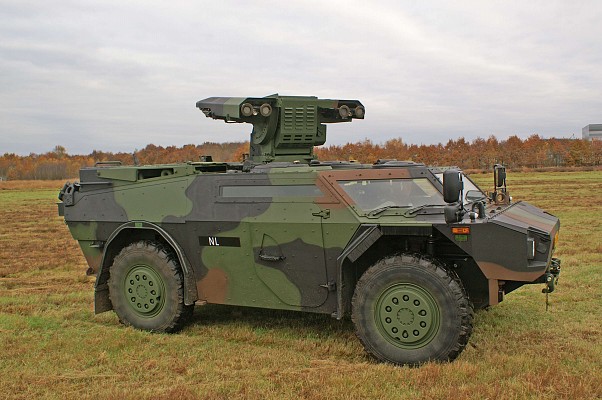
Fennek SWP
Dutch variant of the Fennek. Fitted with low profile turret with four Stinger missiles ready to launch.
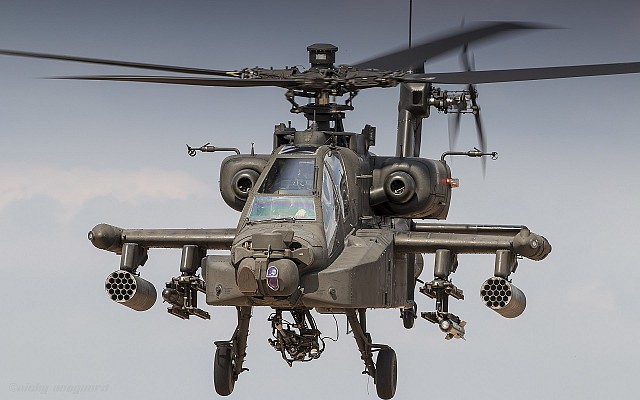
Boeing AH-64 Apache
The Apache can be armed with AIM-92 Air To Air Stinger missiles on a wingtip launcher.
Media
Related articles

FIM-43 Redeye
The FIM-92 Stinger was developed as a more capable successor of the FIM-43 Redeye. During development the Stinger was known as Redeye II.
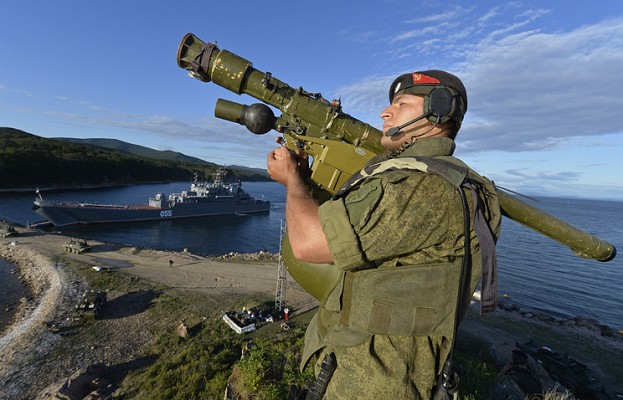
9K38 Igla
The Igla can be considered the Soviet/Russian counterpart to the Stinger. The Igla has a better performance than earlier generations of Soviet MANPADS.
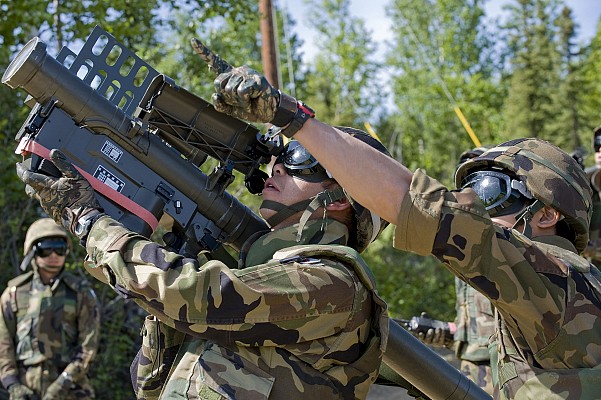
Type 91 Kin-SAM
The Japanese Type 91 Kin-SAM is very akin to the Stinger.
